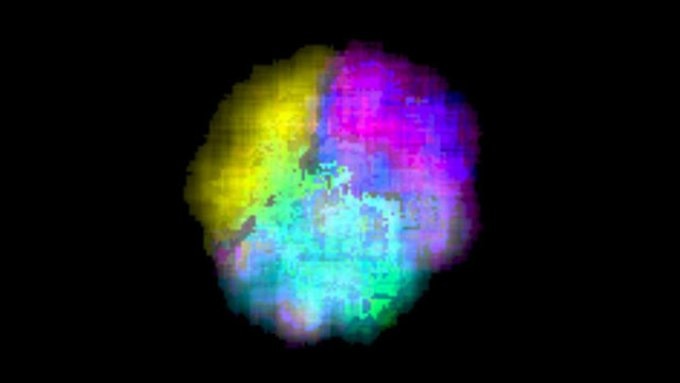Mar 1 2019
Researchers at Northwestern University have created a blueprint to understand and predict the properties and behavior of complex nanoparticles and enhancing their use for a wide range of scientific uses. These include optoelectronics, bio-imaging, transistors, catalysis, and energy storage and conversion.
 Tetraphase heterostructured nanoparticle with six interphases. (Image credit: Northwestern University)
Tetraphase heterostructured nanoparticle with six interphases. (Image credit: Northwestern University)
The latest study findings have positively enabled the synthesis, or creation, of a wide range of polyelemental nanoparticles—structures with as many as eight types of elements. However, there is still a narrow insight into how the phase arrangement inside these structures influences their properties and how particular interfaces (the common surface between bound structures, known as heterostructures) can be ideally designed and produced.
“As the combinatorial space of mixtures is nearly infinite, with billions of possibilities, predicting and understanding how specific classes of interfaces can be established in a single particle is crucial for designing new and functional nanostructures and, ultimately, optimizing their properties for various scientific applications,” said Chad A. Mirkin, the George B. Rathmann Professor of Chemistry in the Weinberg College of Arts and Sciences and the director of the International Institute for Nanotechnology at Northwestern, who headed the research.
In the research, the team utilized scanning probe block copolymer lithography (SPBCL), invented and developed at Northwestern by Mirkin, to erect a new library of polyelemental heterostructured nanoparticles comprising up to seven different metals.
The study has been published in the journal Science on March 1st.
We used computational tools, such as density functional theory, to compute interfacial energies between phases, as well as surface energies, and combined these into an overall nanoparticle energy. What we found is that observed morphologies minimized calculated energies. As a result, we now have a tool to predict and understand these types of phase arrangements in nanoparticles.
Chris Wolverton, Jerome B. Cohen Professor of Materials Science and Engineering, in McCormick School of Engineering, Northwestern University.
Wolverton is the study’s co-author.
“Our contribution enables the synthesis of numerous types of interfaces, providing a vast playground to explore their properties and phenomena—such as novel catalysts and light-emitting nanostructures—for useful purposes,” said co-author Vinayak Dravid. He is the Abraham Harris Professor of Materials Science and Engineering and the director of the Northwestern University Atomic and Nanoscale Characterization Experimental Center (NUANCE).
The Science paper is titled “Interface and heterostructure design in polyelemental nanoparticles.” Peng-Cheng Chen and Mohan Liu are the study’s first authors.
The study is supported by the Sherman Fairchild Foundation, the Air Force Office of Scientific Research (award FA9550-17-1-0348) and the Vannevar Bush Faculty Fellowship program, sponsored by the Basic Research Office of the Assistant Secretary of Defense for Research Engineering and funded by the Office of Naval Research (grant N00014-15-1-0043).